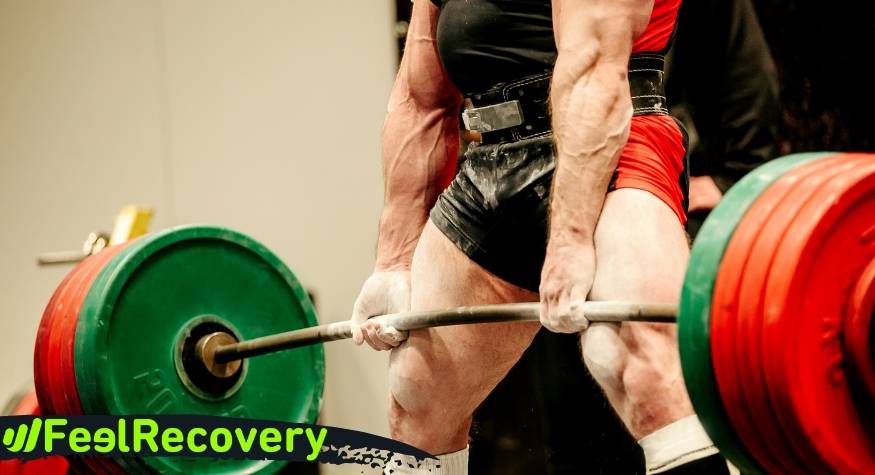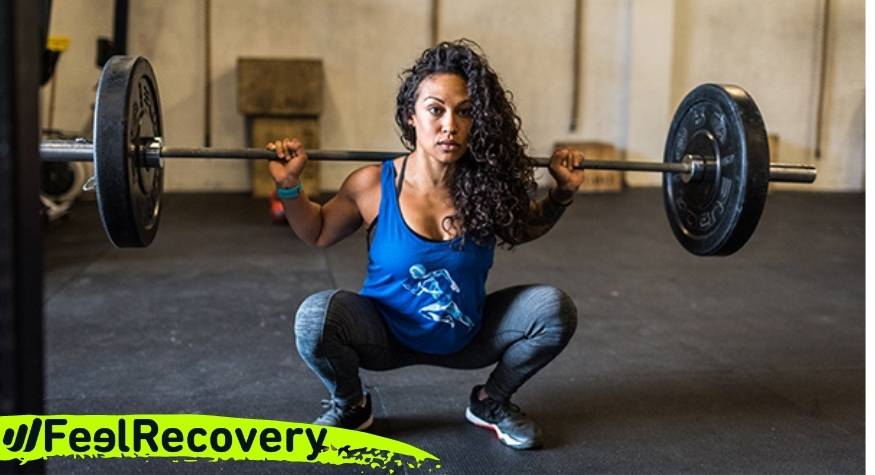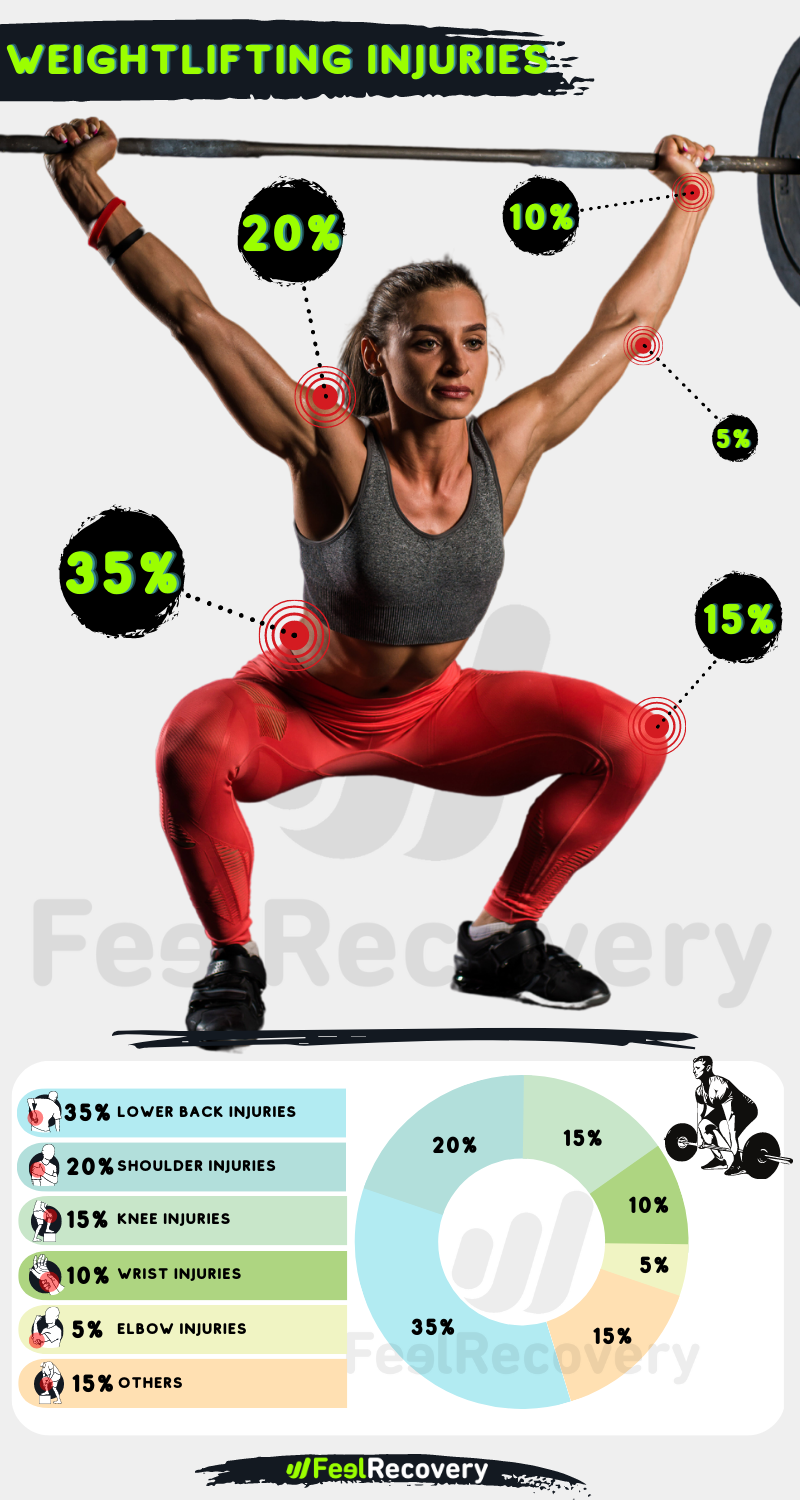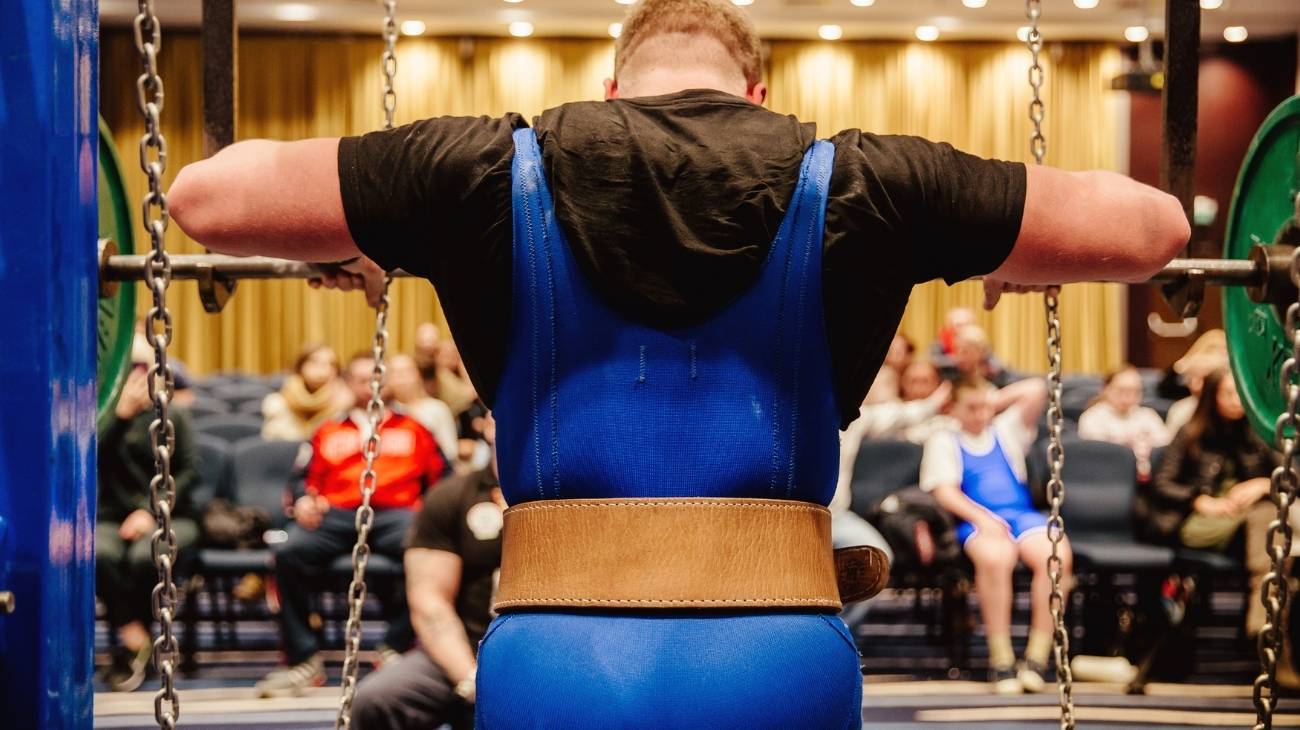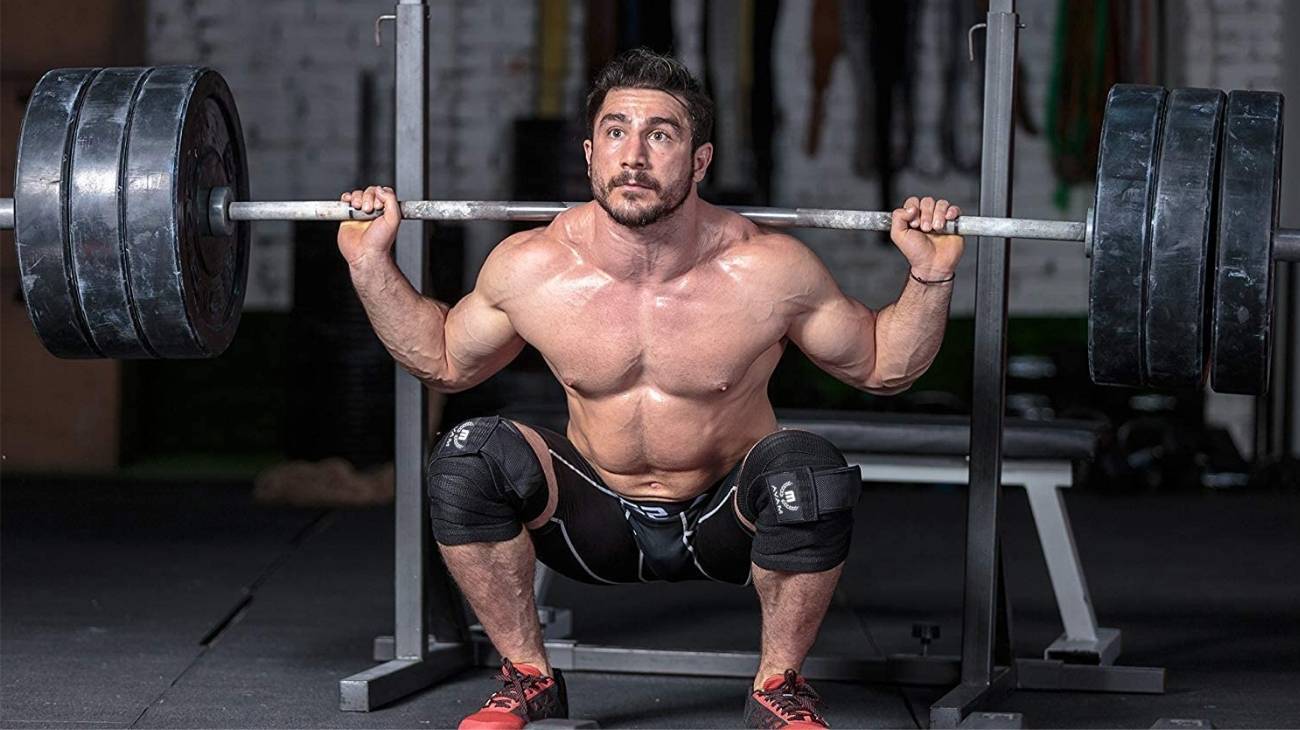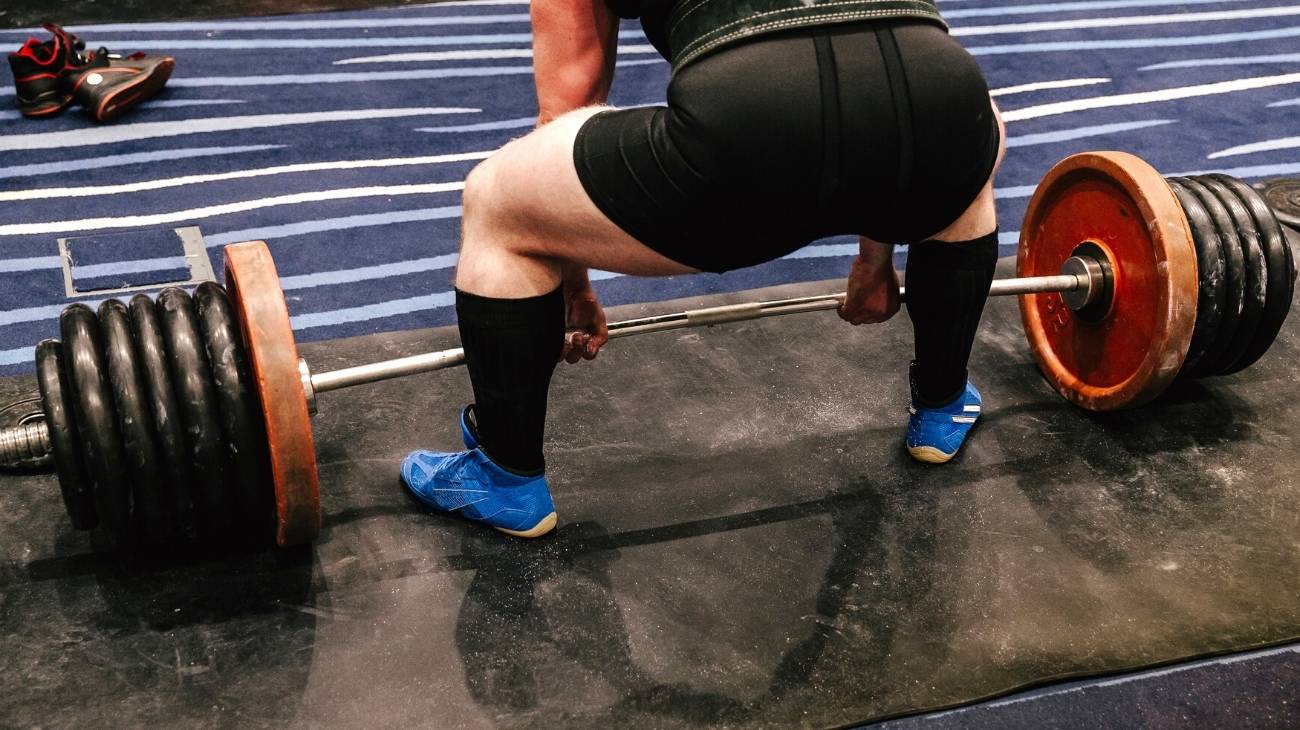Despite scientific advances, there is no specific formula to prevent pain and discomfort after sports training. Nor is there a definitive way to avoid sports injuries; there will always be a minimal risk, even if the technique is correct.
Check out the following list of treatments for the most common weightlifting and strength sports injuries. We will show you step by step how to apply the PRICE therapy as a first aid tool and tell you which are the most effective surgical interventions according to the type of injury you may have as an Olympic athlete.
What are the most common types of injuries when weightlifting or powerlifting?
Although the likelihood of injury is low compared to football, when an injury does occur it is usually severe due to the intensity of weightlifting. The majority of cases are due to poor execution of the lift in either the deadlift or two-stroke mode.
Take a look at this list of the most common injuries:
- Ligament strain: In a strain there is an overstretching of the tissues that line the joints. This injury can occur in the elbows and shoulders of a weightlifter as the arms make the final effort to pull the discs up overhead. Knee ligaments are also stretched by the strides and deep bends athletes perform at the start of their movements.
- Ligament tears: The most recurrent is the rupture of the Anterior Cruciate Ligament, located in the knee, on the inside of the joint. This is the ailment that most affects strength athletes and the one that requires the longest recovery time. The first thing that occurs is micro-cracks in the ligamentous tissue and when there is no medical care, or you return to the bars prematurely, there may be a complete rupture of the ligaments and it is likely to require surgery.
- Muscle fibre tears: Muscles, no matter how well trained, are still susceptible to injury if care is not taken with technique and goals. Muscle tears come with severe localised pain and swelling that prevents free movement of the affected limb, often the forearms. In the back and thighs there are also muscle fibre tears during knee flexions and extensions at start-up.
- Tendonitis: Tendon irritation is caused by overworking the arms and legs. Attempting to lift more weight than you can is a mistake if you have not warmed up properly beforehand. When the body has not been well hydrated and nourished, it is also not conducive to performance. Everything that enters the body is to nourish the tissues and make them resistant.
- Muscle contractures: This is the most minor injury that an athlete in this sport can have. It is the inability of the muscles to regroup after physical exertion. Athletes resort to massages and techniques such as acupressure to reduce muscle tension and improve sporting performance. You can apply the PRICE therapy to this type of injury, and you will learn the steps to follow in this article.
- Joint fractures: Bone heads, which are located in the joints, are the most prone to cracks and cracks due to displacement. They often occur due to incidents on the platform such as off-centring and loss of balance. Usually the bones do not break through the skin, but they do separate into one or more fragments inside the limb. The first thing you notice is a deformation of the joint, along with severe pain.
- Oxidative stress: When we don't pay special attention to nutrition and hydration, it is possible for weightlifting exertion to cause a process called oxidative stress that begins with air entering through the nose and carrying oxygen to the muscle cells. If your body has no natural or artificial antioxidants, muscle exertion accelerates the process and causes tissues to slowly degenerate. As lipids oxidise, sugars and acids in the metabolism do not function properly and cause tissues to lose elasticity and strength.
- Lumbar injuries: Almost all back problems are caused by contractures and overstretching of the muscles in the lumbar region. This is why protective belts are allowed in competitions. A back injury is a matter of great care and long rest, it keeps the body upright and maintains the correct balance when the arms are extended with the discs over the head. Any exercise you do should be focused on strengthening the back muscles and allowing them to become more flexible and elastic.
Best products for Weightlifting injury recovery
Bestseller
-
2 Calf Compression Sleeve (Black/Gray)
£17,50 -
2 Calf Compression Sleeve (Green/Navy)
£17,50 -
2 Calf Compression Sleeve (Pink/Bordeaux)
£17,50 -
2 Elbow Compression Sleeve (Black/Gray)
£17,50 -
2 Elbow Compression Sleeve (Green/Navy)
£17,50 -
2 Elbow Compression Sleeve (Pink/Bordeaux)
£17,50 -
2 Knee Compression Sleeve (Black/Gray)
£17,50 -
2 Knee Compression Sleeve (Green/Navy)
£17,50 -
2 Knee Compression Sleeve (Pink/Bordeaux)
£17,50 -
2 Thigh Compression Sleeve (Black/Gray)
£17,50 -
2 Thigh Compression Sleeve (Green/Navy)
£17,50 -
2 Thigh Compression Sleeve (Pink/Bordeaux)
£17,50 -
Acupressure Mat and Pillow (Black/Gray)
£44,95 -
Acupressure Mat and Pillow (Green/Navy)
£44,95 -
Acupressure Mat and Pillow (Pink/Bordeaux)
£44,95 -
Acupressure Pillow (Black/Gray)
£21,52 -
Acupressure Pillow (Green/Navy)
£21,52 -
Acupressure Pillow (Pink/Bordeaux)
£21,52 -
Back Support Belt (Black)
£29,95 -
Back Support Belt (Green)
£29,95 -
Back Support Belt (Pink)
£29,95 -
Foot Massage Roller for Plantar Fasciitis (Black)
£17,50 -
Foot Massage Roller for Plantar Fasciitis (Green)
£17,50 -
Foot Massage Roller for Plantar Fasciitis (Pink)
£17,50 -
High Density Foam Roller for Muscle (Black/Gray)
£24,95 -
High Density Foam Roller for Muscle (Green/Navy)
£24,95 -
High Density Foam Roller for Muscle (Pink/Bordeaux)
£24,95 -
Ice Massage Roller Ball (Black)
£34,95 -
Ice Massage Roller Ball (Green)
£34,95 -
Ice Massage Roller Ball (Pink)
£34,95 -
Microwave Wheat Bag for Back Pain Relief (Extra Large) (Hearts)
£25,50 -
Microwave Wheat Bag for Back Pain Relief (Extra Large) (Oxford)
£25,50 -
Microwave Wheat Bag for Back Pain Relief (Extra Large) (Sport)
£25,50 -
Microwave Wheat Bag for Neck & Shoulder Pain Relief (Hearts)
£21,50 -
Microwave Wheat Bag for Neck & Shoulder Pain Relief (Oxford)
£21,50 -
Microwave Wheat Bag for Neck & Shoulder Pain Relief (Sport)
£21,50 -
Pack 2 in 1: Foam Roller High + Soft Density (Black/Gray)
£24,95 -
Pack 2 in 1: Foam Roller High + Soft Density (Green/Navy)
£24,95 -
Pack 2 in 1: Foam Roller High + Soft Density (Pink/Bordeaux)
£24,95 -
Sacroiliac Support Belt (Black)
£21,95 -
Sacroiliac Support Belt (Green)
£21,95 -
Sacroiliac Support Belt (Pink)
£21,95 -
Shoulder Support Brace (Black)
£21,95 -
Shoulder Support Brace (Green)
£21,95 -
Shoulder Support Brace (Pink)
£21,95 -
Soft Density Foam Roller for Recovery (Black)
£24,95 -
Soft Density Foam Roller for Recovery (Green)
£24,95 -
Soft Density Foam Roller for Recovery (Pink)
£24,95 -
Trigger Point Massage Stick (Black)
£12,95 -
Trigger Point Massage Stick (Green)
£12,95 -
Trigger Point Massage Stick (Pink)
£12,95
How to apply the RICE therapy to treat first aid injuries in weightlifting?
This method appeared in 1978 and is widely used in the sporting world. PRICE is an update of the old RICE therapy and must be learnt by heart for correct application.
- Protection: Use a classic bandage to prevent sudden movements from complicating the injury picture. Practice how to use the bandages before that terrible moment arrives.
- Rest: From the moment of injury, limit the mobility of the affected arm or leg. Limiting mobility is not the same as doing nothing at all, a minimum of movement in the fingers is always recommended.
- Ice: The best way to apply it is with periods of 10 minutes of use and 10 minutes of rest. If you think you need more time, you can use the ice for up to 20 minutes.
- Compression: If you have compressive garments it is better than using conventional bandages. The material and the amount of pressure of the garments make the anti-inflammatory effect better.
- Elevation: Use a pillow if you need to elevate your leg above your heart. In the arms you can do this while sitting, but your doctor will most likely ask you to lie down. Gravity helps relieve pain and swelling.
Surgical treatments to cure severe or chronic injuries in weightlifters
Only when drugs, rest and physiotherapy do not work on an injury, then surgical interventions are used to try to mitigate the effects of severe damage to bone tissues and structures
Elbow injuries
The elbows tend to be one of the most seriously injured joints as they support much of the weight that the weightlifter lifts, and if there is a failure in technique, the consequences can be quite bad. Some of the most common interventions are:
- Triceps tendon repair: A small cut is made in the skin to repair the affected tissues using arthroscopy. Small cuts are made to remove damaged tissues and reattach them. Recovery time ranges from 10 days to 10 weeks, depending on how many cuts are made due to the complexity of the injury.
- Elbow arthroscopy: A small incision is made to introduce a camera to see the damaged tissues in order to repair them. If it is a torn ligament, it is exchanged for a graft of tissue from the same patient and fixed with surgical anchors to then proceed to start recovery with physiotherapy.
- Elbow fracture repair: This can be done by arthroscopy, but if the damage to the bone is very pronounced, an open operation will be used in which it will be joined with fixation instruments such as pins or surgical screws.
Back and lumbar injuries
Weightlifters often suffer from many chronic injuries to their back, and as this is such a delicate area, it is normal to have to resort to surgery despite all the risks involved.
- Microdiscectomy: This is the name of the procedure to remove material from a vertebral disc that houses a herniated disc. The disc material that presses on the nerve is removed, followed by slow rehabilitation with physiotherapy treatment.
Knee injuries
Knee surgery is very common for this type of athlete because when you suffer a sprain with more than a hundred kilos on top, the damage to the meniscus and ligaments is usually terrible.
- Meniscus repair: With arthroscopy, which makes it a minimally invasive procedure. The tissues are removed and a new stability is achieved in the knee. Recovery takes at least 20 days if the operation goes well. Return to training will require physiotherapy.
- Cruciate ligament repair: An open surgery is performed in which the torn or damaged ligament is removed and replaced with a graft. It is an operation that can take several hours and requires a fairly long recovery time.
References
- Aasa, U., Svartholm, I., Andersson, F., & Berglund, L. (2017). Injuries among weightlifters and powerlifters: a systematic review. British journal of sports medicine, 51(4), 211-219. https://bjsm.bmj.com/content/51/4/211.short
- Mazur, L. J., Yetman, R. J., & Risser, W. L. (1993). Weight-training injuries: common injuries and preventative methods. Sports Medicine, 16, 57-63. https://link.springer.com/article/10.2165/00007256-199316010-00005
- Keogh, J. W., & Winwood, P. W. (2017). The epidemiology of injuries across the weight-training sports. Sports medicine, 47(3), 479-501. https://link.springer.com/article/10.1007/s40279-016-0575-0
- Siewe, J., Rudat, J., Röllinghoff, M., Schlegel, U. J., Eysel, P., & Michael, J. P. (2011). Injuries and overuse syndromes in powerlifting. International journal of sports medicine, 32(09), 703-711. https://www.thieme-connect.com/products/ejournals/abstract/10.1055/s-0031-1277207
- Hamill, B. P. (1994). Relative safety of weightlifting and weight training. J Strength Cond Res, 8(1), 53-7. https://paulogentil.com/pdf/Relative%20Safety%20of%20Weightlifting%20and%20Weight%20Training.pdf
- Brown, E. W., & Kimball, R. G. (1983). Medical history associated with adolescent powerlifting. Pediatrics, 72(5), 636-644. https://publications.aap.org/pediatrics/article-abstract/72/5/636/49023/Medical-History-Associated-with-Adolescent
- Bengtsson, V., Berglund, L., & Aasa, U. (2018). Narrative review of injuries in powerlifting with special reference to their association to the squat, bench press and deadlift. BMJ Open Sport & Exercise Medicine, 4(1), e000382. https://bmjopensem.bmj.com/content/4/1/e000382.abstract
- Ángel Rodríguez, M., García-Calleja, P., Terrados, N., Crespo, I., Del Valle, M., & Olmedillas, H. (2022). Injury in CrossFit®: a systematic review of epidemiology and risk factors. The Physician and Sportsmedicine, 50(1), 3-10. https://www.tandfonline.com/doi/abs/10.1080/00913847.2020.1864675
- Mundt, D. J., Kelsey, J. L., Golden, A. L., Panjabi, M. M., Pastides, H., Berg, A. T., ... & Hosea, T. (1993). An epidemiologic study of sports and weight lifting as possible risk factors for herniated lumbar and cervical discs. The American journal of sports medicine, 21(6), 854-860. https://journals.sagepub.com/doi/abs/10.1177/036354659302100617
- Reddell, C. R., Congleton, J. J., Huchingson, R. D., & Montgomery, J. F. (1992). An evaluation of a weightlifting belt and back injury prevention training class for airline baggage handlers. Applied ergonomics, 23(5), 319-329. https://www.sciencedirect.com/science/article/abs/pii/0003687092902935

